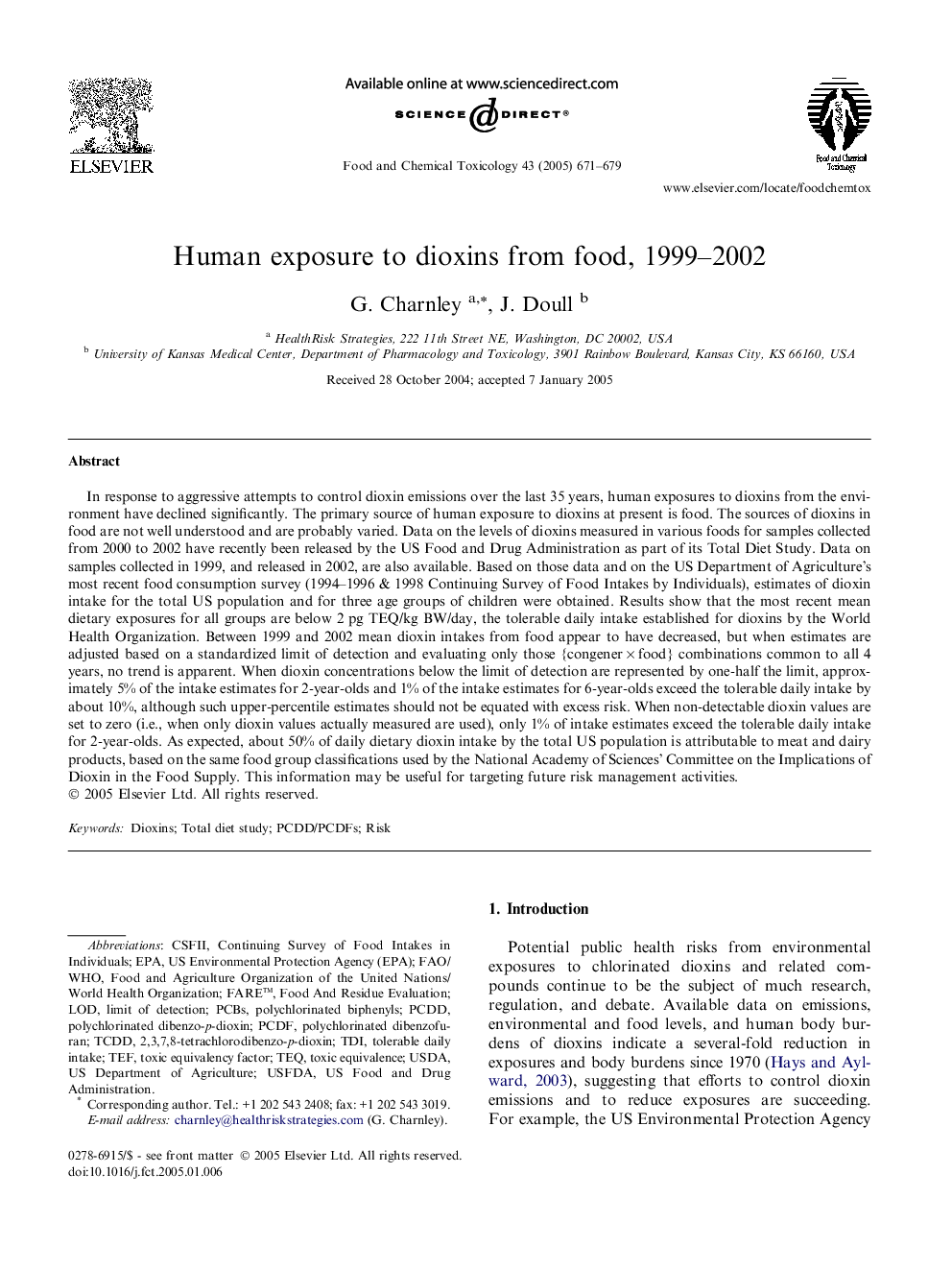| کد مقاله | کد نشریه | سال انتشار | مقاله انگلیسی | نسخه تمام متن |
|---|---|---|---|---|
| 9030642 | 1130932 | 2005 | 9 صفحه PDF | دانلود رایگان |
عنوان انگلیسی مقاله ISI
Human exposure to dioxins from food, 1999-2002
دانلود مقاله + سفارش ترجمه
دانلود مقاله ISI انگلیسی
رایگان برای ایرانیان
کلمات کلیدی
USDA, US Department of AgricultureTEF, Toxic Equivalency FactorTEQ, toxic equivalencePCDD, Polychlorinated dibenzo-p-dioxinPCDF, Polychlorinated dibenzofuranTDI, tolerable daily intakePCBs, polychlorinated biphenyls - PCBs، bifenyls polychlorinatedPCDD/PCDFs - PCDD / PCDFsTCDD, 2,3,7,8-tetrachlorodibenzo-p-dioxin - TCDD، 2،3،7،8-تترا کلریدیبنزوپت دیوکسینLOD, limit of detection - حد تشخیصRisk - خطرDioxins - دیوکسین هاTotal diet study - مطالعه رژیم غذایی کامل
موضوعات مرتبط
علوم زیستی و بیوفناوری
علوم کشاورزی و بیولوژیک
دانش تغذیه
پیش نمایش صفحه اول مقاله

چکیده انگلیسی
In response to aggressive attempts to control dioxin emissions over the last 35 years, human exposures to dioxins from the environment have declined significantly. The primary source of human exposure to dioxins at present is food. The sources of dioxins in food are not well understood and are probably varied. Data on the levels of dioxins measured in various foods for samples collected from 2000 to 2002 have recently been released by the US Food and Drug Administration as part of its Total Diet Study. Data on samples collected in 1999, and released in 2002, are also available. Based on those data and on the US Department of Agriculture's most recent food consumption survey (1994-1996 & 1998 Continuing Survey of Food Intakes by Individuals), estimates of dioxin intake for the total US population and for three age groups of children were obtained. Results show that the most recent mean dietary exposures for all groups are below 2 pg TEQ/kg BW/day, the tolerable daily intake established for dioxins by the World Health Organization. Between 1999 and 2002 mean dioxin intakes from food appear to have decreased, but when estimates are adjusted based on a standardized limit of detection and evaluating only those {congener Ã food} combinations common to all 4 years, no trend is apparent. When dioxin concentrations below the limit of detection are represented by one-half the limit, approximately 5% of the intake estimates for 2-year-olds and 1% of the intake estimates for 6-year-olds exceed the tolerable daily intake by about 10%, although such upper-percentile estimates should not be equated with excess risk. When non-detectable dioxin values are set to zero (i.e., when only dioxin values actually measured are used), only 1% of intake estimates exceed the tolerable daily intake for 2-year-olds. As expected, about 50% of daily dietary dioxin intake by the total US population is attributable to meat and dairy products, based on the same food group classifications used by the National Academy of Sciences' Committee on the Implications of Dioxin in the Food Supply. This information may be useful for targeting future risk management activities.
ناشر
Database: Elsevier - ScienceDirect (ساینس دایرکت)
Journal: Food and Chemical Toxicology - Volume 43, Issue 5, May 2005, Pages 671-679
Journal: Food and Chemical Toxicology - Volume 43, Issue 5, May 2005, Pages 671-679
نویسندگان
G. Charnley, J. Doull,